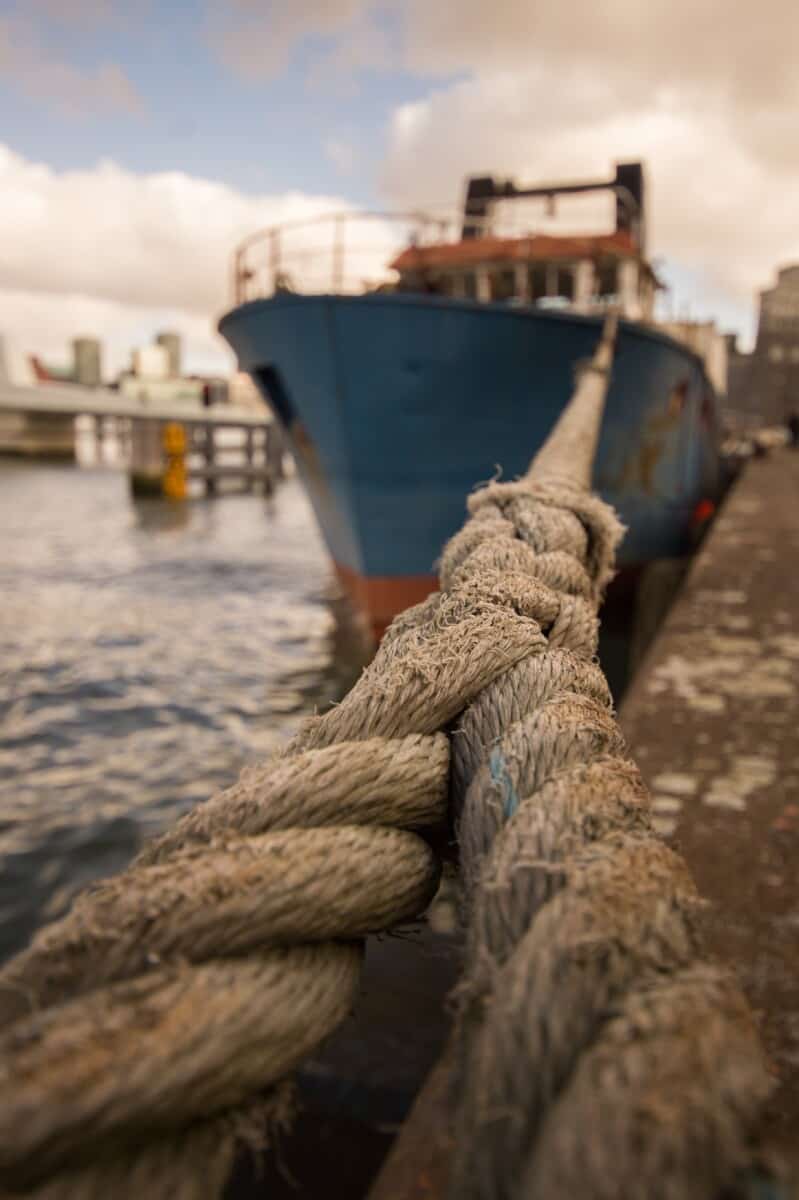A good knowledge of sailing knots is a great necessity for every sailor. As a sailor, it is important that you know what different knots there are, their different uses and their drawbacks.
The key to understanding knots is to know what a certain knot should look like when completed and then practice tying it until you can do it with your eyes closed.
There are a few things you may want to pay attention to when studying knots; these are commonly used terms. The ends of a line are referred to as either “working” or “standing.” The working end is free, while the standing end is secured to something. A loop formed in a line is known as a bight. With that said, we can now move on the different types of knots that there are.
The Bowline Knot
This is perhaps the most useful knot aboard a sailboat. When tied, it forms a fixed noose at the end of a line. It cannot run or slip. The bowline knot is commonly used, for example, to secure sheets to the clew of a headsail. Two bowlines can also be used to connect two lines.
One unique advantage of a bowline is that no matter how tight it becomes after being loaded for a while, it can always be easily untied. This cannot be said for the other types of knots.
Most sailors who learnt how to tie the bowline knot learnt it with the rabbit song. It goes: “The rabbit comes out of the hole, goes around back of the tree, and then jumps back into the hole.”
Here, the “rabbit” is the working end of the line; the “hole” and “tree” are formed in the standing end. To finish the knot properly, give a hard pull on the tree and the rabbit’s ears at the same time, so the shape of the knot is not deformed. To untie a bowline, turn the knot over and break its back by bending it downward.
Form a closed loop in the line, with the working end passing over the standing end. Pass the working end through the loop, around behind the standing end, then put it back into the loop.
Give a hard pull in order to close the knot up tight. If you need to untie a bowline, you just turn the knot over and break its back by bending it downward. Simple, right?
Reef Knot
This is also known as the Square knot and Hercules knot. The reef knot is used to bind a rope around an object by tying two ends of the rope together.
Although most people do this, please note that it is not recommended for tying two different ropes together. If it is used with ropes of different thicknesses, the reef knot may slip.
To tie a reef knot, place the two ends of the rope parallel and cross them over, placing one rope over the other, then under, and then over again. Take the ends and cross them over-under-over again, then pull the ends tight.
Sheet Bend Knot
A square knot is used by many sailors when they are tying two lines together. However, these often come loose when not under load. The sheet bend knot however is more secure, is easy to untie and works much better when two lines of unequal diameter need to be tied together.
As you will see when you successfully learn how to tie one, its final form is only slightly different from a square knot, though it is tied quite differently.
Form a bight in the end of one line. Then pass the end of the other line through the bight from beneath and around behind both parts of the first line. You end the knot by passing the working end of the second line under itself, then pull the knot tight.
Two Half Hitches Knot
From the name itself, you already have an idea of what it means. The two half hitches knot has a self-explanatory name: one half hitch, followed by another half hitch. It is easy to tie and forms a running noose that can be made larger or smaller.
This is the perfect hitch to use to tie a line tightly around any object. When combined with a round turn, it becomes an excellent way to secure a dock line to a piling. Tying two half hitches on top of a clove hitch is also the best way to keep a fender whip from slipping.
To tie the two half hitches knot, you pass the line twice around the object it is being secured to. Then tie one hitch on top of the turns by passing the working end of the line behind the standing end and pulling it through. Repeat to tie the second hitch. You can tie two half hitches without taking turns first, but they are less secure this way.
Rolling Hitch Knot
This is also known as Magnus hitch. The rolling hitch is used to fasten a rope to a rod, pole or another rope. It is sometimes used to pull along an object lengthwise, as opposed to right angles.
The rolling hitch knot is often used to rig a stopper, to slacken a tight sail line or sheet so that a jammed winch can be cleared safely.
The rolling hitch is formed by coiling the rope around the object or other rope, bringing it towards the direction of pull and between the object and the standing part.
Then you create another successive coil in the direction of the pull, bring the tail over the standing part in the opposite direction to the pull. You end with a half hitch around the object.Put the rope in the same direction as the coils, then pull tight and apply load to the rope.
Clove Hitch
This knot is most useful for attaching a rope to a series of posts because it allows the length of the running end to be adjusted with ease.
To tie a clove hitch in the middle of the rope, form a loop in the rope, followed by an identical second loop the same way up as the first. You then cross the two loops over each other so they form a pretzel-like knot, then place the knot over the post.
Stopper Knot
In a bid to keep a line from pulling through a block or rope clutch, a knot should be tied in the end of it. The most secure knot for doing this is the double overhand stopper knot.
It is also known as the stopper knot for short. However, unlike a simple overhand knot or a figure eight knot, the stopper knot does not come loose easily.
The easiest way to tie a true stopper knot is by using your hand as a form. Just loop the end of the line twice around the palm of your hand, then tuck the working end under the two loops, and then pull the loops off your hand. Once you try it and master it, you’ll never use a figure eight again.
Working back to front, pass the working end twice around the palm of your open hand. After you’ve got two full wraps, pass the working end under the wraps on your palm away from your thumb. Then use the end to pull the knot tight as it slips off your hand.
Conclusion
As you gain more experience in the tying of different knots and you know what they are used for, you will begin to recognize families of knots that are related.
For example, two half hitches and the cleat hitch are really clove hitches: the former is tied on the standing end of a line, while the latter is bent around the horns of a cleat.
Mastering these knots is a huge step forward in being a competent, confident sailor. As you practice tying these seven essential knots, you will immediately recognize the look and shape of the knot when made correctly, and more important, will recognize when you have tied it incorrectly.

